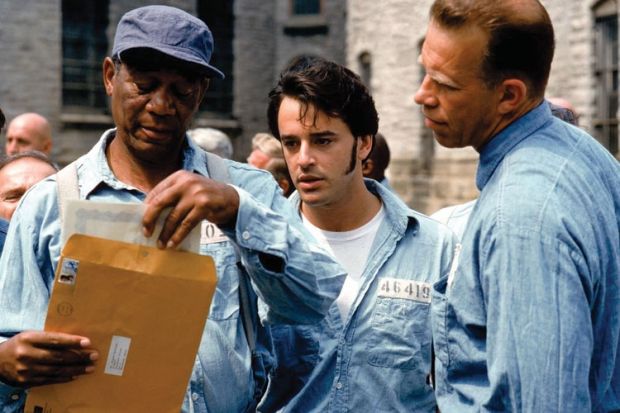It’s tempting to think of Mark Twain apologising for the length of a letter and explaining that had he had more time he’d have written a shorter one
“I believe the novella is the perfect form of prose fiction. It is the beautiful daughter of a rambling, bloated ill-shaven giant (but a giant who’s a genius on his best days).”
If you’re willing to go along with Ian McEwan’s observation in his 2012 New Yorker piece – and I am – recent examples of bloated novels might include A. M. Homes’ May We Be Forgiven (nearly 170,000 words), Jonathan Franzen’s Freedom (close to 200,000 words) and Kate Atkinson’s Life After Life (more than 250,000 words). Sure, there have always been longer novels around – Moby-Dick (210,000 words), War and Peace (more than 500,000) – but 30-odd years ago, many of the novels I read were short: The Prime of Miss Jean Brodie (39,000 words), Slaughterhouse Five (49,000), Billy Liar (54,000).
The novel’s drift towards obesity is partly cultural: in this period, many aspects of life have become inflated. A Starbucks cappuccino comes in a super-sized mug, whereas the Italian prototype is served in a standard cup. Films were mostly shorter in the last century: Raging Bull comes in at 129 minutes, whereas Martin Scorsese’s most recent, The Wolf of Wall Street, is 180. In this context, it’s tempting to think of Mark Twain apologising for the length of a letter and explaining that had he had more time he would have written a shorter one.
The opposite of the often phone-directory heft of the contemporary novel might be the short story, which benefits from brevity and distillation. From Anton Chekhov to Alice Munro, many classic short stories are less than 10,000 words. A short story on its own can be a satisfying read, but a single-author collection or an anthology? Maybe less so; a book of short stories can feel episodic.
One of the attractions of the novel is that it’s immersive and usually takes days not hours to read. What you read at any given sitting is a continuation of what has gone before and a preparation for what lies ahead. The novel depends for its effect on being extended and cohesive. Thoughts like these lead me to suggest that the novella can have the virtues of both novel and short story without the shortcomings of either.
Just what a novella is has been hotly debated, with some of the heat focusing on length. The Great Gatsby, at 55,000 words, is considered too long and, at 15,000 words, James Joyce’s The Dead too short. Between these boundaries, The Turn of the Screw (42,000 words), Animal Farm and Ethan Frome (both 30,000) would appear to be novellas – at least in regard to length.
I recently suggested to Nicholas Royle, Salt Publishing’s fiction editor (and senior lecturer in creative writing at Manchester Metropolitan University), that Alison Moore’s Man Booker shortlisted The Lighthouse, which he had sourced and edited, might be a novella.
He strongly disagreed. “It is not, in my view, a matter of word count. The Lighthouse is not a novella. It is a novel. It’s a short novel. A novella, I was taught by my German lecturers at university, is a novella because it has a tighter focus. It’s about one thing and probably only really about one character. It may have unity of place, too.”
Richard Ford, in his introduction to The Granta Book of the American Long Story, examines just such theorisation of the form and suggests that the difference between short story and novella is that, while the story involves restriction and intensity, the novella may have intense effects but wider implications. He fails to find much consensus on what a novella is, though, and decides to take a straw poll of other American writers. The one aspect on which his peers agreed was that it would be between 60 and 120 pages long.

This tallies with what Stephen King writes in the introduction to Different Seasons, his collection of four novellas (including Rita Hayworth and the Shawshank Redemption, the source of the similarly titled film). He, too, thinks that there isn’t a hard and fast definition. “But when a writer approaches the 20,000-word mark, he knows he’s edging out of the country of the short story; likewise when he passes the 40,000-word mark, he’s edging into the country of the novel.”
I’d like to be able to say that when we were setting the upper and lower word count for the new Manchester Metropolitan University Novella Award we consulted Ford and King – but we didn’t; I came across their thoughts on the form later. What we did was to look at a selection of books that were generally agreed to be novellas, umm-ed and ahh-ed a bit and made our decision.
However it may be defined, the novella is said to be a form that publishers of fiction don’t like: too long for magazines, too short to be passed off as a novel. McEwan opened his New Yorker feature with an overview of the kind of resistance there is to the form: “Perhaps you don’t have the necessary creative juice. Isn’t the print rather large, aren’t the lines too widely spaced?” This was precisely the tenor of the media response when Zadie Smith’s 80-page The Embassy of Cambodia was published last year for £7.99. For that kind of money, the pundits argued, most book buyers wanted a good many more pages.
But is a novella really a difficult product to market? Deborah Levy’s novella Swimming Home was Man Booker-shortlisted in 2012. And although it was marketed as a novel, Julian Barnes’ The Sense of an Ending is under 40,000 words long – which didn’t prevent it winning the previous year’s Man Booker prize. Mohsin Hamid’s The Reluctant Fundamentalist – not far over the 40,000-word mark – has sold more than a million copies around the world and his latest, How to Get Filthy Rich in Rising Asia, at almost exactly the same length, is racking up very healthy sales, too.
While getting our award off the ground, my thinking was that the short form was ideally suited to the time-poor, on-the-move contemporary reader using a range of mobile devices. We live (in my imagination at least) in a society where commuters are heads-down in their e-reader, tablet or smartphone.
As it turns out, plenty of data bear this out. Last month, The Guardian reported that in Britain, and even more abroad, e-books are booming. In 2012, digital fiction sales were 188 per cent up on 2011. YouGov predicted that after the 2013 Christmas season there would be 20 million tablets in the UK. Specifically because of this increase in tablet ownership, the research and consulting service Futuresource’s 2014 forecast is for 36 per cent growth in the e-book market. And, surprisingly, in a report last year the mobile app researcher Flurry found that almost 90 per cent of e-book reading on mobile devices is done on smartphones while, according to Mobile Marketing magazine, 72 per cent of the UK population now own a smartphone.
E-reading has become a phenomenon. Whether this means that readers in a hurry are favouring shorter works of fiction is impossible to say, but the novelist Jeff Noon, who considers his most recent work Channel SK1N to be a novella, contends that it was published exclusively in e-book form to help smooth over any uncertainty that people might have had about its length. “Readers aren’t as aware of page count in the electronic realm as they are in a paper book,” he argues.
In the end, perhaps it doesn’t matter whether readers are actually stampeding towards novellas any more than it matters that agreement on the definition is elusive. It’s simply a very attractive form for writers and readers. McEwan sees the novel as too capacious, too unruly to achieve perfection but he can, he says, conceive of the perfect novella. My hope is that the MMU Novella Award uncovers writers who feel the same way.
Register to continue
Why register?
- Registration is free and only takes a moment
- Once registered, you can read 3 articles a month
- Sign up for our newsletter
Subscribe
Or subscribe for unlimited access to:
- Unlimited access to news, views, insights & reviews
- Digital editions
- Digital access to THE’s university and college rankings analysis
Already registered or a current subscriber? Login

